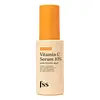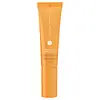What's inside
What's inside
 Key Ingredients
Key Ingredients

 Benefits
Benefits

 Concerns
Concerns

No concerns
 Ingredients Side-by-side
Ingredients Side-by-side

Water
Skin Conditioning3-O-Ethyl Ascorbic Acid
Skin ConditioningEthoxydiglycol
HumectantButylene Glycol
HumectantPanthenol
Skin ConditioningTriethanolamine
BufferingFerulic Acid
AntimicrobialAllantoin
Skin ConditioningPhenoxyethanol
PreservativePentylene Glycol
Skin ConditioningSodium Hyaluronate
HumectantGlycerin
HumectantTocopheryl Acetate
AntioxidantLactobacillus/Lemon Peel Ferment Extract
Skin ConditioningCitrus Aurantium Dulcis Peel Extract
Emulsion StabilisingAcrylates/C10-30 Alkyl Acrylate Crosspolymer
Emulsion StabilisingTranexamic Acid
AstringentTranexamoyl Dipeptide-22
BleachingNicotinoyl Dipeptide-22
Skin ConditioningBifida Ferment Lysate
Skin ConditioningEthylhexylglycerin
Skin ConditioningSodium Bisulfite
AntioxidantWater, 3-O-Ethyl Ascorbic Acid, Ethoxydiglycol, Butylene Glycol, Panthenol, Triethanolamine, Ferulic Acid, Allantoin, Phenoxyethanol, Pentylene Glycol, Sodium Hyaluronate, Glycerin, Tocopheryl Acetate, Lactobacillus/Lemon Peel Ferment Extract, Citrus Aurantium Dulcis Peel Extract, Acrylates/C10-30 Alkyl Acrylate Crosspolymer, Tranexamic Acid, Tranexamoyl Dipeptide-22, Nicotinoyl Dipeptide-22, Bifida Ferment Lysate, Ethylhexylglycerin, Sodium Bisulfite
 Reviews
Reviews

Ingredients Explained
These ingredients are found in both products.
Ingredients higher up in an ingredient list are typically present in a larger amount.
You might know this ingredient as Ethyl Ascorbic Acid, a more stable version of ascorbic acid.
Like other types of vitamin C, this ingredient has many benefits including reducing wrinkles, skin soothing, dark spot fading, and fighting against free radicals.
3-O-Ethyl Ascorbic Acid interferes with the process of skin darkening, helping to reduce hyperpigmentation. It also encourages the skin to produce more collagen.
Once applied, 3-O-Ethyl Ascorbic Acid is converted to Vitamin C deeper in the skin's layers. This process is slow but makes this ingredient more tolerable for skin.
The optimum pH range for this ingredient is 4 - 5.5
Learn more about 3-O-Ethyl Ascorbic AcidPanthenol is a common ingredient that helps hydrate and soothe the skin. It is found naturally in our skin and hair.
There are two forms of panthenol: D and L.
D-panthenol is also known as dexpanthenol. Most cosmetics use dexpanthenol or a mixture of D and L-panthenol.
Panthenol is famous due to its ability to go deeper into the skin's layers. Using this ingredient has numerous pros (and no cons):
Like hyaluronic acid, panthenol is a humectant. Humectants are able to bind and hold large amounts of water to keep skin hydrated.
This ingredient works well for wound healing. It works by increasing tissue in the wound and helps close open wounds.
Once oxidized, panthenol converts to pantothenic acid. Panthothenic acid is found in all living cells.
This ingredient is also referred to as pro-vitamin B5.
Learn more about PanthenolTranexamic Acid is best used for treating hyperpigmentation, discoloration, and melasma. It can also help build a stronger skin barrier.
Once applied, Tranexamic Acid starts decreasing inflammation from UV exposure. Tranexamic Acid also prevents our skin cells from meeting the pigment production cells.
Its brightening property makes it great at reducing the appearance of acne scars and marks.
Fun fact: Tranexamic Acid is also a medication used to reduce heavy bleeding.
This acid is derived from lysine, an amino acid.
Learn more about Tranexamic Acid